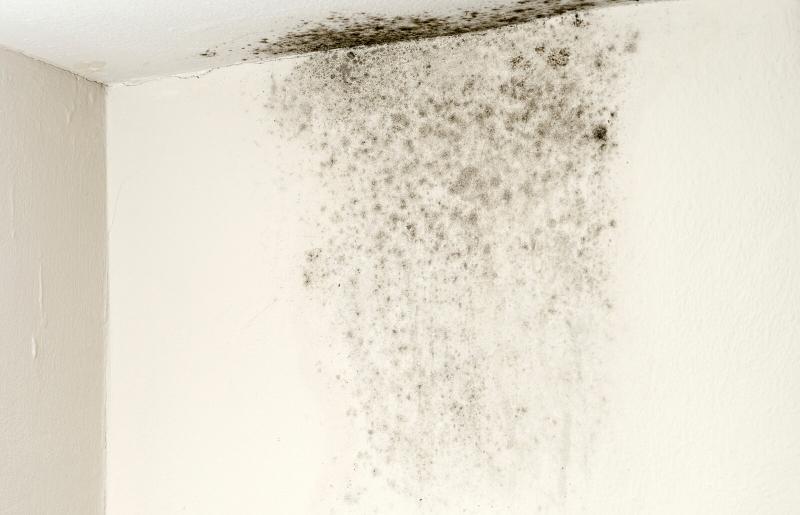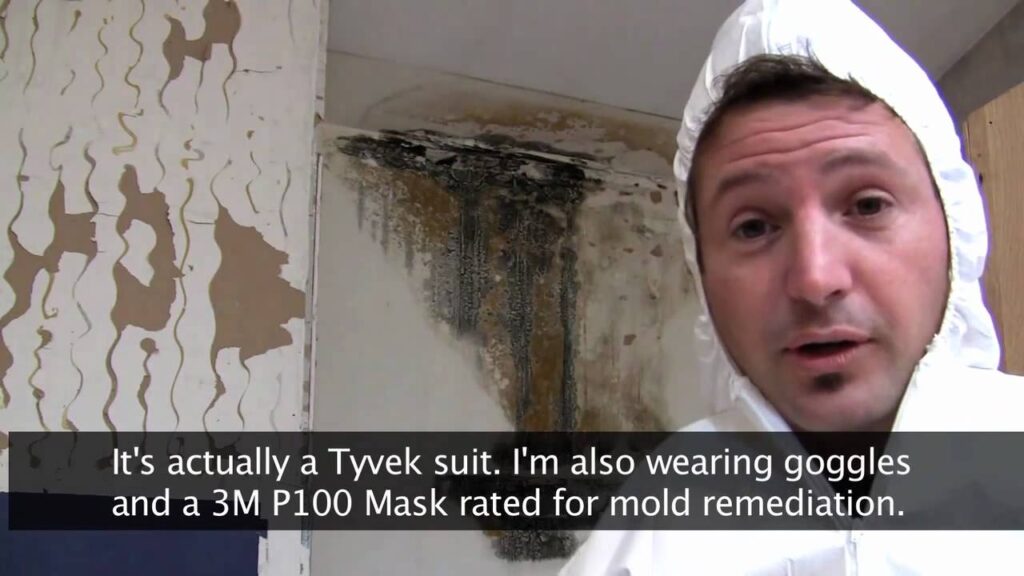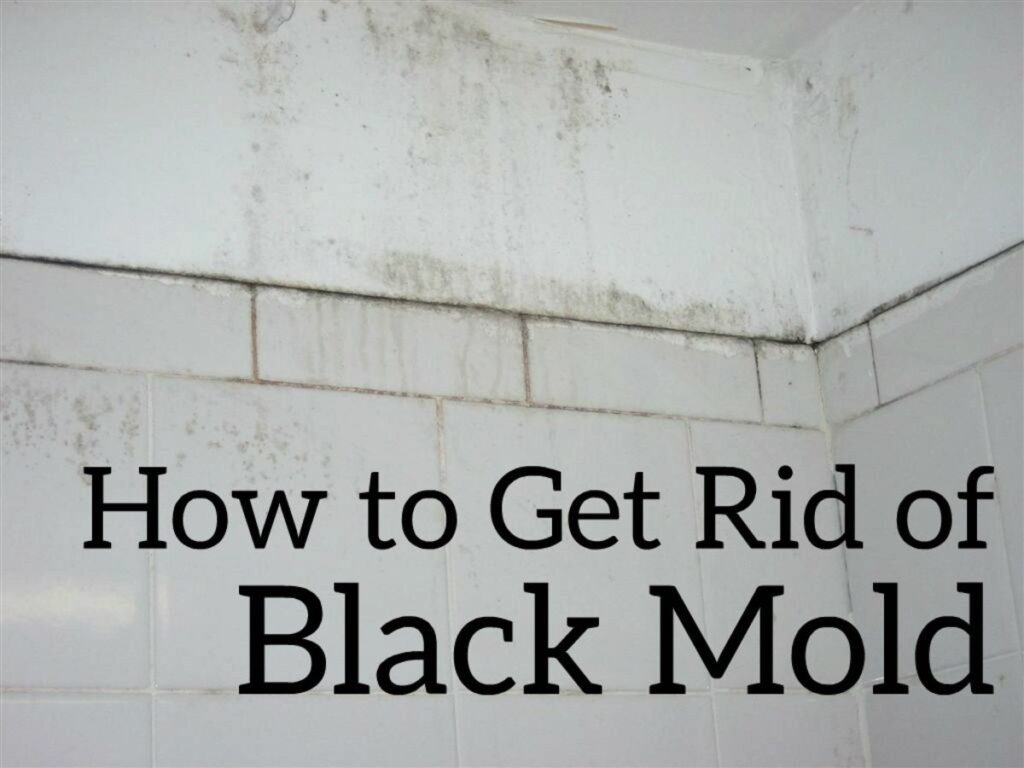If you’re dealing with black mold on your drywall, it’s important to approach the removal process with caution. While removing black mold from drywall can be a daunting task, taking the right precautions is key to ensure your safety and prevent further spread of the mold spores. In this article, we’ll discuss some essential precautions you should take when tackling the removal of black mold from your drywall, providing you with the knowledge and guidance to handle the situation effectively and safely. From wearing protective gear to proper disposal methods, we’ve got you covered.
Wear Protective Gear
Importance of Protective Gear
When it comes to removing black mold from drywall, wearing protective gear is of utmost importance. Mold spores can easily become airborne during the removal process and can potentially cause health issues if inhaled or come into contact with the skin. Protective gear serves as a barrier between you and the mold, minimizing the risk of exposure.
The importance of wearing protective gear cannot be emphasized enough. Mold spores are tiny and can easily be inhaled, leading to respiratory problems such as coughing, wheezing, and even allergic reactions. In addition, black mold produces mycotoxins, which can be harmful when ingested or absorbed through the skin.
Recommended Gear to Wear
To protect yourself during the removal process, make sure to wear the following gear:
- N95 Respirator Mask: This mask is specifically designed to filter out airborne particles, including mold spores. It forms a tight seal around your nose and mouth, providing maximum protection.
- Safety Goggles: Mold spores can easily irritate the eyes, so it’s important to wear safety goggles to shield them from potential harm.
- Disposable Gloves: Mold spores can also irritate the skin, so wearing disposable gloves is essential. Choose gloves made of nitrile or latex to ensure proper protection.
- Protective Clothing: Wear long sleeves and pants to cover your skin. It’s also a good idea to wear disposable coveralls for added protection.
- Closed-Toe Shoes: Mold spores can easily be tracked into your home, so wearing closed-toe shoes will prevent them from attaching to your footwear.
By wearing the recommended protective gear, you can ensure that you’re taking the necessary precautions to keep yourself safe and minimize the risk of exposure to black mold spores.
Contain the Affected Area

Why Containing the Area is Important
One of the key steps in mold removal is containing the affected area. This is crucial to prevent the spread of mold spores to other parts of your home. When disturbed, mold spores can become airborne and easily disperse, causing contamination in previously unaffected areas.
By containing the affected area, you create a controlled environment that limits the spread of mold spores. This not only helps protect your health but also prevents further damage to your home’s structure and contents.
Methods for Containment
To effectively contain the affected area during mold removal, follow these methods:
- Use Plastic Sheeting: Seal off the area with plastic sheeting to create a barrier between the affected area and the rest of your home. Ensure the plastic is tightly secured to prevent any air or mold spores from escaping.
- Cover HVAC Vents: HVAC vents can act as a transportation route for mold spores. Cover them with plastic and tape to prevent the spores from spreading through the air ducts.
- Close Doors and Windows: Close all doors and windows in the affected area and adjacent rooms to limit the movement of mold spores.
- Turn off Fans: Switch off any fans or ventilation systems in the affected area to prevent the circulation of mold spores to other parts of your home.
Remember, proper containment is essential for a successful mold remediation process. By implementing these methods, you can effectively minimize the spread of mold spores and protect yourself and your home.
Seal Off HVAC Systems

Risks of Not Sealing HVAC Systems
HVAC systems play a crucial role in maintaining the air quality in your home. However, when dealing with black mold removal, failing to seal off the HVAC systems can lead to serious consequences. Mold spores can easily travel through the air ducts and contaminate the entire house, making the problem even worse.
Allowing mold spores to enter the HVAC system puts you at risk of breathing in the contaminated air, potentially causing respiratory problems and other health issues. Additionally, the mold can quickly spread through the ductwork, leading to more extensive mold growth in your home.
Steps to Properly Seal HVAC Systems
To avoid the risks associated with not sealing HVAC systems, follow these steps to properly seal them off:
- Turn off the HVAC: Before starting the mold removal process, turn off the HVAC system to prevent the circulation of mold spores throughout the house.
- Cover the Intake Vents: Use plastic sheeting and tape to cover the intake vents. This will prevent any mold spores from being sucked into the system.
- Seal the Air Ducts: Seal off the supply and return air ducts in the affected area using plastic sheeting and duct tape. Ensure a tight seal to prevent any air movement.
- Professional Assistance: For more complex systems, or if you are unsure about the proper sealing methods, it’s recommended to seek professional assistance from a HVAC specialist.
By properly sealing off your HVAC systems during the black mold removal process, you can protect yourself and your home from the potential dangers of airborne mold spores and limit the spread of contamination.
Use Proper Ventilation

Benefits of Adequate Ventilation
Proper ventilation is essential when removing black mold from drywall. It helps to remove excess moisture in the air, discouraging mold growth and preventing the accumulation of spores. Adequate ventilation also promotes the circulation of fresh air, improving the overall air quality in your home.
By ensuring proper ventilation during the mold removal process, you create an environment that is less favorable for mold to thrive. This not only aids in the removal process but also helps prevent future mold growth.
Tips for Proper Ventilation
To achieve proper ventilation during the mold removal process, consider the following tips:
-
Open Windows: If weather conditions permit, open windows near the affected area to allow fresh air to circulate. This will help reduce the concentration of mold spores in the air.
-
Use Fans: Position fans to blow air out of the contaminated area. This will help remove airborne mold spores and promote air circulation. Avoid using fans that can potentially stir up mold spores and spread them to other parts of your home.
-
Utilize Natural Ventilation: Make use of natural ventilation systems, such as vents or exhaust fans, to draw out stale air and bring in fresh air. This will help maintain a well-ventilated environment during the mold removal process.
Remember, proper ventilation is essential when dealing with black mold removal. By following these tips, you can improve air quality, minimize the risk of mold growth, and create a healthier living environment in your home.
Avoid Drywall Damage

Reasons to Prevent Drywall Damage
Drywall can be easily damaged during the mold removal process. However, it’s crucial to prevent unnecessary damage to avoid further complications. Damaged drywall can provide additional hiding places for mold, making the remediation process more challenging and costly.
By minimizing drywall damage, you ensure that the mold removal process is more effective and efficient. It also helps maintain the structural integrity of your walls and reduces the need for extensive repairs.
Techniques for Minimizing Damage
To minimize damage to drywall during the mold removal process, consider the following techniques:
-
Use Proper Tools: Use the right tools, such as a sharp utility knife or mold removal scraper, to carefully remove the affected drywall without causing unnecessary damage.
-
Apply Moisture: Before removing the affected drywall, moisten it slightly with water. This will help reduce the release of mold spores into the air and minimize the risk of inhalation during the removal process.
-
Cut Strategically: When cutting the drywall, make precise and strategic cuts to remove only the affected area. Avoid making large or jagged cuts, as this can lead to more extensive damage.
-
Professional Assistance: If you’re unsure about the proper techniques for minimizing drywall damage, it’s best to seek professional assistance from a mold remediation company. They have the expertise and experience to handle the removal process efficiently and safely.
By implementing these techniques, you can minimize drywall damage and ensure a successful mold removal process.
Avoid Direct Contact

Dangers of Direct Contact
Direct contact with black mold can pose serious health risks. Mold spores contain allergens and toxins that can cause various health issues when they come into contact with the skin. Prolonged exposure to mold spores through direct contact can lead to skin irritation, rashes, and even more severe allergic reactions.
It’s important to avoid direct contact with black mold during the removal process to protect yourself from potential health hazards. Taking precautions will help prevent any adverse reactions and keep you safe.
Ways to Prevent Direct Contact
To minimize the risk of direct contact with black mold, follow these preventive measures:
-
Wear Protective Gloves: Always wear disposable gloves made of nitrile or latex to create a barrier between your skin and the mold.
-
Avoid Touching the Mold: Refrain from touching the mold directly with your bare hands. Instead, use tools or gloves to handle the affected area during the removal process.
-
Proper Hand Hygiene: After completing the mold removal, wash your hands thoroughly with soap and water. This will remove any potential mold spores that may have come into contact with your skin.
By taking these simple steps, you can protect yourself from the potential dangers of direct contact with black mold.
Minimize Spread of Spores
Importance of Minimizing Spore Spread
One of the primary goals during the mold removal process is to minimize the spread of mold spores. Mold spores are easily airborne and can settle in other areas of your home, leading to further contamination and more difficult remediation.
Minimizing the spread of mold spores is crucial to prevent the worsening of the mold problem and to protect the health of you and your family. By taking precautions to limit the spread, you can ensure a more successful mold removal process.
Precautions to Limit Spore Spread
To minimize the spread of mold spores during the removal process, consider the following precautions:
-
Containment: As mentioned earlier, properly contain the affected area using plastic sheeting and sealing techniques to prevent the spread of mold spores.
-
Dampen Affected Materials: Before removing or cleaning affected materials, lightly mist them with water to minimize the release of mold spores into the air.
-
Use Air Scrubbers: Air scrubbers with HEPA filters can be used to capture airborne mold spores, preventing them from spreading to other areas of your home.
-
Clean and Vacuum Properly: Use HEPA-filtered vacuum cleaners and damp cloths to clean and wipe down surfaces in the affected area. Avoid using traditional brooms or dry dusters, as they can stir up mold spores and spread them.
By implementing these precautions, you can minimize the spread of mold spores and ensure a more effective and safe mold removal process.
Choose the Right Cleaning Products
Effectiveness of Proper Cleaning Products
Using the right cleaning products is essential for effective black mold removal. Not all cleaning agents are designed to eliminate mold spores and prevent mold growth. By choosing the appropriate products, you can ensure a thorough cleanup and reduce the risk of mold regrowth.
Proper cleaning products are specifically formulated to target mold and mildew, effectively killing the spores and preventing further contamination. Using the wrong products may not provide the desired results and can even lead to the spread of mold spores.
Recommended Cleaning Products
When removing black mold from drywall, consider using the following recommended cleaning products:
-
Bleach: Bleach is effective in killing mold spores on hard surfaces. Mix one part bleach with ten parts water and use a spray bottle to apply it to the affected area. Allow the solution to sit for 15 minutes before wiping it clean.
-
Vinegar: Vinegar is a natural alternative to bleach and can be just as effective in killing mold spores. Spray undiluted vinegar onto the affected area and let it sit for at least one hour before wiping it clean.
-
Commercial Mold Cleaners: There are various commercial mold cleaners available on the market. Look for products that contain ingredients like hydrogen peroxide, tea tree oil, or borax. Follow the manufacturer’s instructions for proper usage.
-
Detergent and Water: For less severe mold infestations, a mixture of detergent and water can be effective. Scrub the affected area with the detergent-water solution and rinse thoroughly.
Always remember to wear protective gear and follow proper safety precautions when using cleaning products. Ensure good ventilation during the cleaning process to prevent the accumulation of fumes.
By using the recommended cleaning products, you can effectively eliminate black mold and create a healthier living environment.
Proper Disposal of Contaminated Materials
Risks of Improper Disposal
Proper disposal of contaminated materials is crucial to prevent the spread of mold spores and avoid potential health risks. Incorrect handling and disposal of mold-infested materials can lead to the introduction of mold spores into other areas of your home or the environment, exacerbating the problem.
Improper disposal can also pose a health risk to waste management personnel and potentially contaminate water sources if disposed of incorrectly. It is essential to follow proper procedures to ensure safe and responsible disposal of mold-contaminated materials.
Steps for Safe Disposal
To safely dispose of mold-infested materials, follow these steps:
-
Double-Bagging: Place all mold-infested materials, such as drywall or carpet, into heavy-duty plastic bags. Double-bagging can help contain any loose mold spores and prevent their release during transportation.
-
Seal Bags: Ensure the bags are thoroughly sealed to prevent any mold spores from escaping. Use duct tape or zip ties to securely close the bags.
-
Label Bags: Clearly label the bags as “Mold-Contaminated” to alert waste management personnel of their contents.
-
Arrange Proper Disposal: Contact your local waste management facility or consult local regulations to determine the appropriate disposal method for mold-contaminated materials. Some areas may require you to schedule a special pickup or drop-off at designated locations.
-
Cleanup and Disinfection: After disposing of the contaminated materials, thoroughly clean and disinfect the area to ensure any lingering mold spores are eliminated.
By following these steps, you can safely and responsibly dispose of mold-contaminated materials, reducing the risk of further contamination and ensuring the well-being of both your home and the environment.
Seek Professional Help if Necessary
Recognizing the Need for Professional Assistance
While minor mold problems can often be handled by homeowners, there are instances when professional help is necessary. It’s important to recognize when the mold situation is beyond your capabilities or when expertise is required to ensure proper remediation.
Seeking professional assistance is recommended in the following situations:
-
Extensive Mold Growth: If the mold growth covers a large area, typically over 10 square feet, it’s best to consult a professional mold remediation company. They have the necessary equipment, experience, and knowledge to handle larger-scale mold problems.
-
Hidden Mold or Structural Damage: If you suspect hidden mold behind walls, ceiling, or floors, or if the mold has caused structural damage, professional assessment and remediation are crucial. They can conduct necessary testing, identify the extent of the mold problem, and provide appropriate solutions.
-
Health Concerns: If you or anyone in your household is experiencing severe allergic reactions or respiratory problems due to mold exposure, it’s important to seek professional help. They can address the underlying cause and provide effective mold removal techniques to eliminate health risks.
When to Call a Mold Remediation Company
Contact a mold remediation company under the following circumstances:
-
Significant Water Damage: If your mold problem is a result of significant water damage, such as flooding or a burst pipe, it’s essential to call a professional promptly. They can assess the extent of the damage and ensure proper remediation.
-
Compromised Immune System: If you or anyone in your household has a compromised immune system, such as due to chronic illness or ongoing medical treatments, seeking professional help is advisable. They can take extra precautions to ensure the safety and well-being of vulnerable individuals.
-
Persistent Mold Growth: If you’ve attempted to remove the mold yourself but it keeps coming back, it’s a sign of a more significant underlying issue. A mold remediation company can identify the source of the problem and provide effective solutions to prevent further mold growth.
By recognizing the need for professional assistance and contacting a trusted mold remediation company, you can ensure a thorough and safe resolution to your mold problem.
In conclusion, when removing black mold from drywall, it’s crucial to take the necessary precautions to protect yourself, minimize the spread of mold spores, and ensure a successful remediation process. By wearing protective gear, containing the affected area, sealing off HVAC systems, using proper ventilation, avoiding drywall damage, preventing direct contact, minimizing spore spread, choosing the right cleaning products, and properly disposing of contaminated materials, you can effectively eliminate black mold and create a healthier living environment in your home. Remember, if the mold situation is extensive, hidden, or causing health concerns, don’t hesitate to seek professional help to ensure a safe and thorough remediation process.